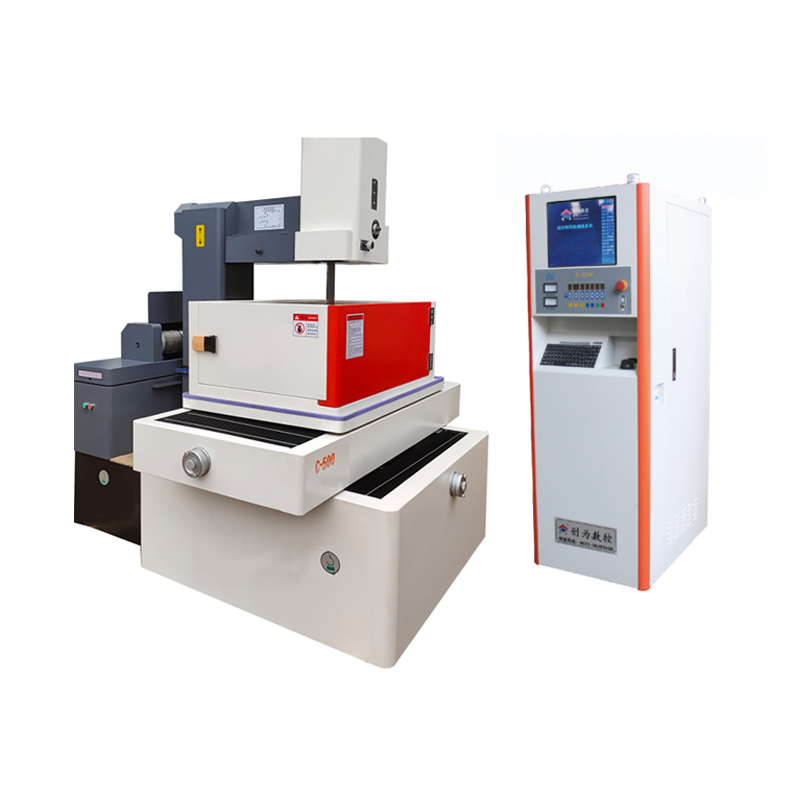Medium Speed Wire Cutting: Precision and Efficiency in Manufacturing
 2025.02.06
2025.02.06
 Industry news
Industry news
In the realm of manufacturing, precision and efficiency are crucial. As industries push for more intricate designs and tighter tolerances, traditional cutting methods are increasingly being replaced by advanced technologies. One such technique that has gained significant traction in recent years is medium speed wire cutting. This technology offers a balance between precision and speed, making it an ideal solution for various applications, from tool-making to aerospace engineering.
The term “medium speed” refers to the rate at which the wire moves through the material. While high-speed wire cutting is used for fast, less intricate cuts, medium-speed wire cutting strikes a balance between speed and accuracy. It allows manufacturers to create more complex shapes with tight tolerances while still maintaining a relatively fast cutting speed.
Medium speed wire cutting operates through the principle of electrical discharge machining. The wire, typically made of brass or copper, is submerged in a dielectric fluid that helps to cool the material and flush away debris during the cutting process. The wire is continuously fed through the workpiece while a high-voltage electrical current is passed through it.
As the wire moves, it generates sparks that erode the material, one small layer at a time. The precision of this process allows for intricate designs and cuts, even in hard or conductive materials like steel, titanium, or copper. The gap between the wire and the workpiece is carefully controlled, ensuring that the cut is clean and accurate.
One of the most significant advantages of medium speed wire cutting is its precision. The process can achieve tolerances of up to ±0.001 mm, making it ideal for industries that require extremely accurate components. The ability to cut complex shapes with tight tolerances ensures that parts fit together seamlessly, reducing the need for additional finishing processes.

Medium speed wire cutting is not limited to specific materials. It is effective for cutting a wide range of materials, including tough metals like stainless steel, hardened steel, tool steel, titanium, and even more delicate materials like copper or aluminum alloys. This versatility makes it a popular choice in industries such as aerospace, automotive, and medical device manufacturing, where a variety of materials are often used.
Unlike mechanical cutting methods, medium speed wire cutting results in smooth edges and minimal burr formation. This reduces the need for secondary processes like deburring, saving both time and cost. The process is also relatively quiet compared to mechanical cutting methods, contributing to a more comfortable work environment.
Medium speed wire cutting excels at creating complex geometries that would be challenging or impossible with traditional cutting methods. It can cut internal cavities, thin sections, sharp corners, and even features like keyways, all with exceptional accuracy. This capability is particularly beneficial in industries that require custom tooling or intricate part designs.
Since the wire used in this process is continuously fed and does not come into direct contact with the material being cut, there is minimal tool wear. This extends the life of the cutting wire and reduces the need for frequent replacements, making the process more cost-effective over time.
In tool and die manufacturing, precision is paramount. Medium speed wire cutting is commonly used to create molds, dies, and cutting tools with intricate geometries and tight tolerances. Its ability to cut hard materials makes it ideal for creating durable tools that are used in other manufacturing processes.
The aerospace and automotive industries require components that are lightweight, durable, and precisely engineered. Medium speed wire cutting is used to create parts such as turbine blades, gear shafts, and engine components. The ability to cut complex shapes with minimal waste makes it an excellent choice for these high-performance sectors.
The medical device industry demands high precision and reliability. Medium speed wire cutting is used to produce parts for medical equipment, such as surgical instruments, implants, and diagnostic devices. The process ensures that components meet the strict quality standards required in this highly regulated industry.
The electronics industry also benefits from medium speed wire cutting, especially when manufacturing small, intricate parts like connectors, casings, and circuit boards. The process allows for detailed cuts without damaging delicate components, ensuring that each part is functional and accurate.
When designing prototypes or producing custom parts in small batches, medium speed wire cutting offers an efficient solution. Its ability to quickly produce high-precision cuts means that prototypes can be tested and refined with minimal delay. It also allows manufacturers to create parts with custom features that are not possible with standard cutting methods.
While medium speed wire cutting offers numerous benefits, it does have some limitations. For one, the process can be slower than traditional cutting methods, especially when cutting thick or hard materials. Additionally, the cost of setting up the equipment and maintaining the wire can be higher compared to mechanical cutting methods. Furthermore, the process is best suited for conductive materials and may not be effective for non-conductive materials like certain plastics or ceramics.


 English
English Español
Español










